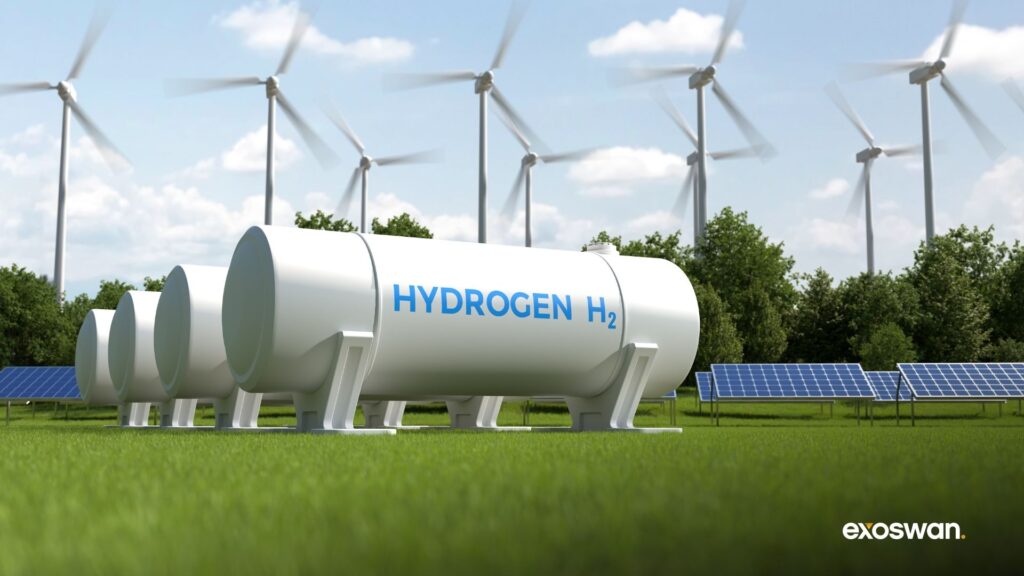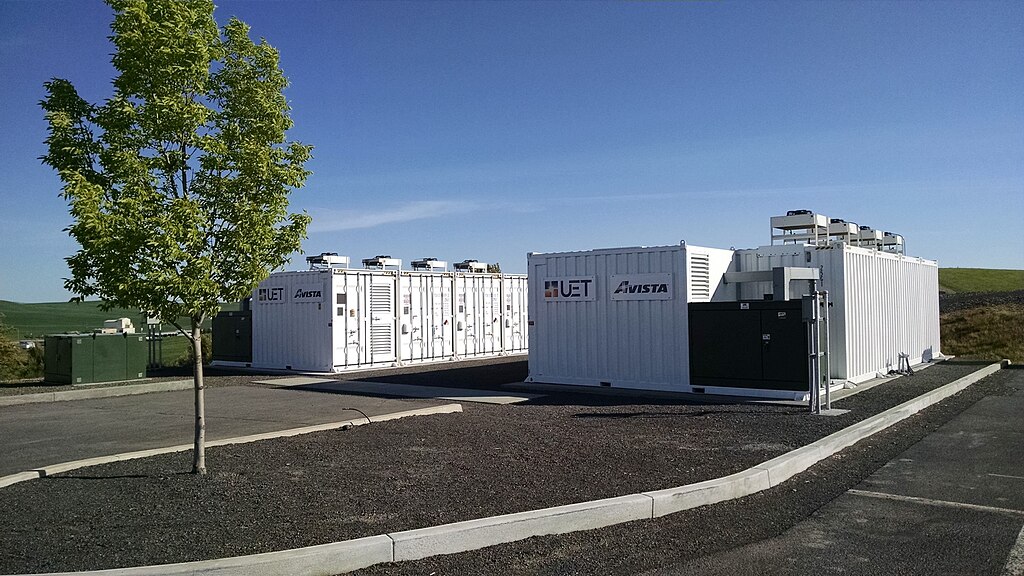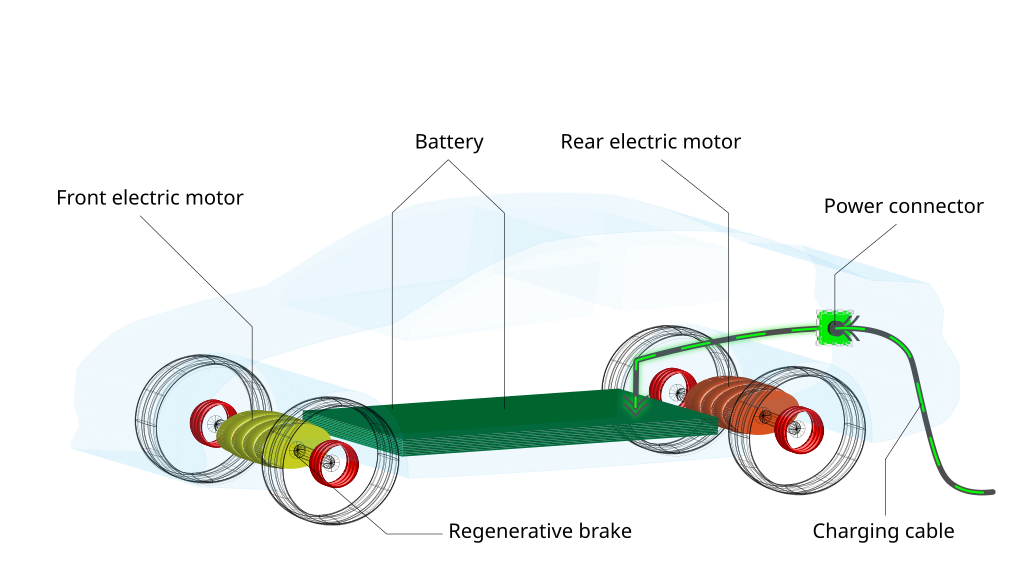Energy storage is the missing middle in the clean-energy stack. Solar panels and wind turbines make cheap electricity when nature cooperates, but businesses don’t get paid for electrons that spill over a congested grid at noon and vanish at dusk. Storage turns those stranded megawatts into an asset class: buy power when it’s abundant, sell it back when it’s scarce, and earn a spread while smoothing volatility for the grid operator. That revenue model now scales beyond batteries—into flow systems that run all night, zinc and sodium chemistries that shrug off supply shocks, and green-hydrogen plants that bank weeks of energy at a time. Put simply, energy storage is becoming the gatekeeper between cheap generation and reliable supply. Own the hardware, the software, or the commodities that enable it, and you own a slice of every future electron that moves through the system.
In this report, we highlight the top energy storage stocks to watch, curated for exposure to breakthroughs in advanced li-ion, flow & zinc, solid-state, and green hydrogen technologies.

Why energy storage, why now?
The grid of the 2020s is an hourglass—plenty of renewable energy at the top, growing electric demand at the bottom, and a narrow neck in between. Energy storage widens that neck. Global deployments jumped 53% in 2024 as utilities rushed to firm renewables and avoid blackouts. In the United States alone, developers added 12.3 GW / 37 GWh of capacity, enough to power 5 million homes for four hours.
Three forces have converged to enable this growth.
- First, cost is crashing: Lithium-ion pack prices fell 20% in 2024 to a record $115 per kWh, the steepest drop since 2017. That figure was $1,200 just fifteen years ago. Similar cost curves are now unfolding in iron flow, zinc, and electrolyzers as automated lines come online.
- Second, policy has been a tailwind: the U.S. Inflation Reduction Act grants a stand-alone tax credit for storage, slicing capital costs by up to 30% and spurring record build-outs through 2024-25. Europe and China have rolled out similar incentives and capacity-market payments.
- Finally, capital is steady and hungry for yield: clean-energy investment hit $2.1 trillion in 2024 (up 11% year-over-year), with storage singled out as one of the fastest-growing buckets. Add rising penetration of weather-dependent renewables—set to top 40% of global generation by 2030—and grid operators are signaling they will pay handsomely for flexibility.
In short, the world has built the renewable “engines” and now needs the “transmissions.” History shows that when an enabling technology shifts from nice-to-have to must-have, opportunities arise for outsized gains. For investors, energy storage is not just a climate imperative, but could be one of the most actionable growth themes of the next decade.
Advanced Lithium-Ion Batteries
Silicon-rich lithium-ion batteries are the near-term step-change in performance. They fit today’s factories and supply chains, yet promise 20-40% more energy per kilogram—enough to keep smartphones slim and push EV ranges toward 500 miles. For investors, this means revenue sooner and scaling lessons already learned in lithium. Among energy storage stocks, this segment offers the most “show-me” catalysts over the next 24 months.
Enovix (NASDAQ: ENVX)
HQ: USA; 3D-stacked silicon-anode batteries for compact, high-density applications.
Enovix builds lithium-ion batteries that pack more punch into the same footprint by swapping the traditional graphite anode for a 100% silicon one and stacking the layers in a 3-D architecture. The Fremont-based company proved the concept in wearables, then spent the past three years turning the lab win into a factory recipe.
The recipe now lives in “Fab-2,” a high-volume line in Penang, Malaysia. Site-acceptance testing finished at the end of 2024, and the first “Agility Line” is already shipping samples. A development deal signed with a top-five smartphone maker commits Enovix to deliver production cells for a flagship handset in late 2025, a launch that would put silicon batteries into hundreds of millions of pockets overnight.
To get there, the company is qualifying additional tools, locking in ISO 9001 quality systems, and tightening yields. Burn remains high, but cash on hand and an experienced management team give Enovix the runway to ramp. If it executes, investors get direct exposure to the next jump in energy density for consumer electronics—and eventually electric vehicles—without waiting for solid-state chemistry.
Amprius Technologies (NYSE: AMPX)
HQ: USA; Ultra-light silicon nanowire batteries with industry-leading energy density.
Amprius tackles the same power problem from a different angle: grow millions of hollow silicon nanowires on a copper foil, creating room for the silicon to swell and shrink without cracking. The result is the industry’s highest-energy lithium-ion cell—450 Wh/kg today, with third-party tests topping 500 Wh/kg—yet it still drops into existing battery packs.
Those numbers are already proving themselves in the field. In April 2025, Amprius cells powered Airbus’s Zephyr high-altitude drone through a record 67-day stratospheric flight, surviving 100°C temperature swings while storing enough energy to keep the craft aloft through long nights. It’s a vivid demo of what high-energy, high-cycle silicon can do when weight matters.
Scaling is underway. The Fremont pilot line handles specialty orders, but demand from aerospace, defense, and fast-charge e-mobility pushed Amprius to a capital-light model: 1.8 GWh of contract capacity already booked across partners, including a new South-Korean manufacturer announced in May 2025. The SiMaxx and newer SiCore product families give customers a menu: maximum energy for endurance missions or balanced power for quick bursts. For investors, Amprius offers a near-term growth story rooted in real-world deployments, with silicon anode know-how that can ride the broader EV wave as larger factories come online.
SES AI (NYSE: SES)
HQ: USA; Lithium-metal batteries with AI-optimized electrolytes for EV-scale storage.
SES AI is betting that lithium-metal—not silicon—will be the ultimate anode. A lithium-metal foil stores far more charge than graphite but is notoriously tricky to manage. SES attacks that complexity with software: its “Molecular Universe” uses AI to discover new electrolytes, while “Avatar” uses machine-learning vision to catch microscopic defects. In January 2025, SES signed up two global automakers for AI-discovered electrolyte programs worth up to $10 million, validating software as a revenue stream as well as a science engine.
On the hardware side, SES is one step ahead of many solid-state hopefuls. It ships large-format 100 Ah Li-metal cells that cleared the GB38031-2020 EV safety test, and its B-sample batteries for Hyundai-Kia and General Motors deliver roughly 935 Wh/L—about a third more energy per volume than today’s best lithium-ion packs. A dedicated B-sample line in Ui-Wang, South Korea, now under construction, will let partners build and abuse thousands of cells as they march toward C-samples and, ultimately, vehicle launch.
Founded in 2012 out of MIT and now headquartered in the Boston area, SES combines labs in Singapore, Shanghai, and Seoul with a pilot line near its U.S. base. The company’s 2025 roadmap targets first commercial shipments for urban-air-mobility packs and continued scale-up for EV packs, keeping SES on the short list of contenders that could leapfrog conventional lithium-ion. For investors, SES offers exposure to both advanced chemistry and the rising role of AI in battery development.

Flow & Zinc Batteries
Flow and zinc batteries attack the Achilles’ heel of lithium: duration. By storing energy in tanks of liquid electrolyte or plating zinc on steel, they discharge for 8 to 20 hours without fire risk or critical minerals. That makes them tailor-made for solar-heavy grids and remote microgrids. Revenue is lumpy today, but multigigawatt pipelines suggest tipping points in 2026-27 as incentives for long-duration storage kick in. Among energy storage stocks, this segment offers utility-scale size with commodity-light bill of materials.
ESS Tech (NYSE: GWH)
HQ: USA; Iron-flow batteries for safe, long-duration grid storage.
ESS Tech makes batteries out of iron, salt, and water. The benign electrolyte eliminates fire risk and pricey metals, yet the flow chemistry still moves electrons for eight-plus hours—long enough to carry solar power through the night. For years the Oregon company sold 3 MWh “Energy Warehouse” containers to prove durability. In February 2025, it unveiled Energy Base, a site-built platform that pours electrolyte into lined concrete basins and scales like a substation: one acre now holds up to 300 MWh and, after a new membrane mix announced in May, can run 17.8-hour cycles at reduced power.
The scale upgrade slashes unit cost and opens doors to utility-sized orders. ESS has signed a framework to supply 1.6 GWh of modules for a Queensland assembly plant and secured its first Energy Base order from a Florida utility for 2026 commissioning. Honeywell’s 2023 strategic investment and six-year, US$300 million offtake agreement add a blue-chip integrator that can bundle iron-flow storage into turnkey projects.
Execution risk remains, as a leadership shake-up in February underscored the need to convert pipeline into profit. Still, management says gigawatt-hour projects under negotiation could push the business to cash-flow break-even “within the next few years.” For investors, ESS offers a call option on a safe, endlessly recyclable battery chemistry that could dominate the long-duration slice of the storage market.
Eos Energy Enterprises (NASDAQ: EOSE)
HQ: USA; Zinc-hybrid batteries designed for 4–12 hour stationary storage.
Eos Energy Enterprises builds zinc-hybrid batteries that trade lithium’s flammability for a water-based electrolyte and abundant raw materials. Each Z3 cube plates zinc during charge and dissolves it on discharge, delivering four-to-twelve hours of energy with zero thermal-runaway risk. The product ships as sealed 3 MWh blocks that snap together like Lego, letting utilities have right-size run-time without lithium’s supply-chain headaches.
Momentum is accelerating, with seven projects under installation and a US$681 million backlog. Capacity is scaling through “Project AMAZE,” an automated plant in Turtle Creek, Pennsylvania funded by a $303 million U.S. Department of Energy loan guarantee that will lift output to 8 GWh by 2027. The commercial funnel is global: a memorandum with Trip Ventures outlines 400 MWh for Puerto Rico, while Frontier Power signed for 5 GWh tied to the U.K.’s long-duration storage scheme.
Cost curves are bending too as gross margins inch upward. Management also reaffirmed 2025 revenue guidance of US$150–190 million. Though GAAP profits are flattered by non-cash revaluations, the trend shows that scale manufacturing is starting to bite. For investors, Eos provides an American-made, Inflation-Reduction-Act-friendly path to multi-hour storage using cheap zinc and manganese.
Invinity Energy Systems (LON: IES)
HQ: UK; Vanadium flow batteries built for daily, multi-decade cycling.
Invinity Energy Systems turns humble vanadium into rugged flow batteries built to outlast the assets they protect. In a vanadium flow battery, energy sits in two liquid tanks and only flows through stack hardware when needed; nothing plates, nothing swells, nothing catches fire. That chemistry tolerates unlimited daily cycles for 25 years—exactly what solar-heavy grids need.
The company’s first three generations shipped to more than 80 sites on four continents. In December 2024, Invinity launched ENDURIUM, a fourth-generation module that doubles power density and slashes factory time, enabling 4-to-18 hour systems at gigawatt-hour scale. Market response was swift: ENDURIUM has been shortlisted for multiple bids under the U.K.’s Long-Duration Storage Cap-and-Floor scheme, and the government cleared Invinity’s own 20.7 MWh LoDES demonstration project—now under construction near London.
Scale is underpinned by hardware: the new Motherwell, Scotland factory is already building VS3 and ENDURIUM stacks for the LoDES unit with capacity to reach 500 MWh a year. Financials are still early-stage—2024 revenue slipped to £5 million as the firm pivoted from one-off deals to fleet contracts—but average deal size is up 315% and analysts project £24.9 million of revenue in 2025. For investors, Invinity offers pure-play exposure to vanadium flow batteries—a durable, fully recyclable complement to lithium-ion.

Solid-State Batteries
Solid-state batteries promise the holy trinity: higher energy density, faster charging, and inherent safety. They replace the flammable liquid inside today’s cells with a solid ceramic or polymer, unlocking lithium-metal anodes that could boost range by 40%. Timelines remain fluid—commercial volumes start around 2028—but every major automaker is funding prototypes now to secure supply. Among energy storage stocks, solid-state is the moonshot sleeve: binary outcomes, but a single winner could reset the entire value chain across electric markets.
QuantumScape (NYSE: QS)
HQ: USA; Lithium-metal solid-state batteries using ceramic separators.
QuantumScape is building what many battery engineers consider the “end-game” cell: a lithium-metal solid-state pouch that swaps the bulky graphite anode for a thin strip of lithium and replaces the flammable liquid electrolyte with a ceramic separator. On 24 June 2025, the company folded its new “Cobra” separator process into baseline production—boosting heat-treatment speed 25-fold and shrinking equipment footprint, a crucial step toward a gigafactory-ready line.
The hardware is already in customers’ hands. Since late 2024, QuantumScape has shipped low-volume QSE-5 B-sample cells—844 Wh / L and capable of a 10-to-80% fast-charge in 12 minutes—to automotive partners for abuse testing. A licensing deal with Volkswagen’s PowerCo covers full-scale production rights once B-samples clear the gauntlet, positioning the German automaker as the launch customer. Meanwhile, PowerCo’s pilot line in Salzgitter is mirroring QuantumScape’s process so both companies can learn in parallel. Cash matters, too: the April 2025 shareholder letter showed roughly $860 million in liquidity—enough runway, management says, to push through the next two years of scale-up while the business remains pre-revenue.
For investors, the upside is straightforward: if QuantumScape proves it can mass-produce defect-free separators, it unlocks batteries that carry 30-40% more energy than today’s lithium-ion packs without the fire-risk trade-offs. The downside is the typical deep-tech slog—yield ramps, cost curves and an industry still scarred by over-promises. Progress in 2025 shows the physics work; the next test is economics.
Solid Power (NASDAQ: SLDP)
HQ: USA; Sulfide-based solid-state batteries licensed to auto OEMs.
Solid Power tackles solid-state from a chemist’s angle: it sells a sulfide-based electrolyte powder to cell makers—BMW, SK On, and Hyundai among them—and licenses its pouch design rather than building gigafactories itself. That capital-light model frees the Colorado company to focus on materials breakthroughs. In May 2025, Solid Power’s large-format cells rode shotgun in a BMW i7 test mule, marking the first time fully solid batteries hit public roads.
Inside the lab, work is converging on two pilot assets. A continuous electrolyte line—funded in part by a $50 million DOE award—is now in detailed design, with commissioning set for 2026 and name-plate output of 30 t/yr, enough for several thousand EV packs. Meanwhile, a jointly-run cell line at SK On in Korea is completing factory-acceptance testing, giving partners hands-on experience with Solid Power’s process before moving to B-sample scale.
Management’s 2025 playbook is clear: ship more electrolyte, lock in long-term supply contracts and demonstrate 100-Ah automotive cells that cycle 800+ times. If it executes, Solid Power becomes the “arms dealer” of solid-state—profiting whether OEMs decide to build cells in-house or outsource to tier-ones. The risk is that any slip in electrolyte cost or performance could hand the mantle to oxide or polymer rivals.
Ilika plc (LON: IKA)
HQ: UK; Solid-state batteries for EVs and medical micro-devices.
Ilika is the smallest name in this segment, but it punches above its weight by pursuing niches the giants ignore. The U.K. company sells Stereax micro-batteries for medical implants and is scaling Goliath, a large-format solid-state pouch aimed at compact EVs and cordless tools. In April 2025, Ilika announced that Goliath cells made at the U.K. Battery Industrialization Center showed higher yields and faster-charge performance than lab builds—critical proof that its ceramic-polymer composite can survive real production lines.
Just weeks later, Tier-1 suppliers validated the first P1 prototype batches, confirming the 10 Ah cells hit their energy-and-cycle targets. To keep momentum, a 1.5-MWh automated assembly line from Mpac will arrive in the second half of 2025, expanding pilot capacity five-fold and enabling 20+ Ah P2 cells by year-end.
Ilika remains a development-stage story: half-year revenue to October 2024 was £1.0 million and cash stood at £10.1 million after a £2.3 million raise, with another £0.9 million retail offer closing in June 2025. Yet its customer list already spans 21 OEMs, and U.K. government grants offset much of the R&D bill. For investors, Ilika offers levered exposure to a potentially disruptive cell architecture plus a royalty model that could scale without gigawatt cap-ex—provided the upcoming P2 and MVP milestones land on schedule.

Green Hydrogen
Green hydrogen converts surplus wind and solar into a molecule that can be stored for months, shipped anywhere, and burned or electro-chemically reversed back to power. Electrolyzer costs have fallen 50% since 2020 and tax credits in the U.S., EU, and China make large-scale production plausible by decade’s end. Early projects target heavy industry and grid balancing. Among energy storage stocks, this segment offers the broadest addressable market and a hedge against lithium supply risk.
Plug Power (NASDAQ: PLUG)
HQ: USA; Integrated green hydrogen systems from electrolysis to fuel cells.
Plug Power is building an end-to-end green-hydrogen “railroad” that links every step—electrolyzers, liquefaction, logistics, and fuel-cell use—under one roof. Today it runs three plants that already deliver 45 tons of liquid hydrogen a day, plus more than 69 000 fuel-cell forklifts and 250 on-site dispensers for customers such as Amazon and Walmart.
2025 shows the railroad extending fast. In January the U.S. Department of Energy closed a $1.66 billion loan guarantee that will finance up to six new green-hydrogen plants, starting with a 15-ton-per-day facility in Graham, Texas. In May, the Woodbine, Georgia plant set a U.S. production record—300 tons in a single month—proving Plug’s electrolyzers can scale. Insiders keep buying stock, signaling confidence even as the company remains loss-making while it builds out infrastructure.
For investors, Plug offers pure-play exposure to green hydrogen as a form of long-duration, transportable energy storage: renewables are turned into hydrogen today and back into electricity—or zero-carbon motive power—whenever and wherever it’s needed.
Ballard Power (NASDAQ: BLDP)
HQ: Canada; PEM fuel-cell engines for heavy-duty mobility and backup power.
Ballard is the mirror image of Plug: it doesn’t make hydrogen, it turns hydrogen back into electricity. The Canadian firm supplies proton-exchange-membrane (PEM) fuel-cell engines for buses, trucks, trains, and ships—heavy-duty segments where batteries struggle with weight and range. In 2024, Ballard locked in its largest contract ever: 1,000 engines for Solaris buses across Europe, deliverable through 2027. Momentum has continued in 2025 with a fresh 1.5 MW rail order for Sierra Northern Railway in California, underscoring rail as a new growth channel.
To meet demand and cut costs, Ballard is building a Rockwall, Texas “Gigafactory” that will automate stack and plate production. Federal support now totals $94 million in grants and tax credits under the Inflation Reduction Act. The company still holds more than $575 million in cash—ample runway to finish the plant and chase additional mobility deals.
In the green-hydrogen value chain, Ballard is the conversion specialist: when stored hydrogen has to power a vehicle or stabilize a remote micro-grid, its fuel cells do the job cleanly, silently, and at increasingly competitive cost.
Nel ASA (OSL: NEL)
HQ: Norway; Modular electrolyzers for global green hydrogen production.
Norway’s Nel is the oldest name in electrolysis (founded 1927) but is reinventing itself as a high-volume, low-cost supplier of both alkaline and PEM stacks. The Herøya “Gigafactory” hit 1 GW of annual capacity last year, and Nel now ships fully automated modules that can drop straight into 20-, 100- or 500-MW green-hydrogen projects.
2025 has been a year of both expansion and caution. Project timing has shifted, yet order intake improved and the pipeline surpassed 4 GW. In January, Nel secured $29 million in U.S. tax credits for its planned Michigan electrolyzer plant, on top of a previously announced €135 million EU Innovation Fund grant for capacity growth in Europe. Management has, however, slowed the Michigan build-out to preserve capital until U.S. hydrogen tax-credit rules are finalized.
For investors, Nel is a scale-up story: if it can push production costs below $250 per kilowatt, green hydrogen moves closer to $2 per kilogram—cheap enough to act as seasonal storage and replace gray hydrogen in industry.
ITM Power (LON: ITM)
HQ: UK; PEM electrolyzers for industrial-scale hydrogen applications.
ITM Power is the U.K.’s PEM-electrolyzer champion. All stacks roll off a fully automated 1 GW-per-year factory in Sheffield, and a modular design lets customers bolt units together from 2 MW to 100 MW. After two tough reset years the turnaround is gaining traction. In April 2025, ITM raised FY 2025 revenue guidance by 30% to roughly £26 million and forecast positive operating cash flow in the second half.
Growth now comes on two fronts. First, big industrial customers—steel, chemicals, e-fuels—are signing “reference plant” deals that pull through multi-megawatt systems. Second, ITM just launched Hydropulse GmbH, a German subsidiary created to package ITM stacks with balance-of-plant equipment and finance, shortening sales cycles for EU projects. With £283 million in cash at the April fiscal year-end, ITM can fund both additional Sheffield automation and early engineering on a second U.K. gigafactory when orders justify it.
For investors, ITM offers a levered play on PEM electrolysis—the go-to technology for dynamic, renewables-fed hydrogen plants—without the commodity exposure of fuel-cell peers. The bet is simple: as grids saturate with cheap wind and solar, the cheapest way to bank that surplus will be to split water, store the hydrogen, and sell electrons back through fuel cells or industrial processes.